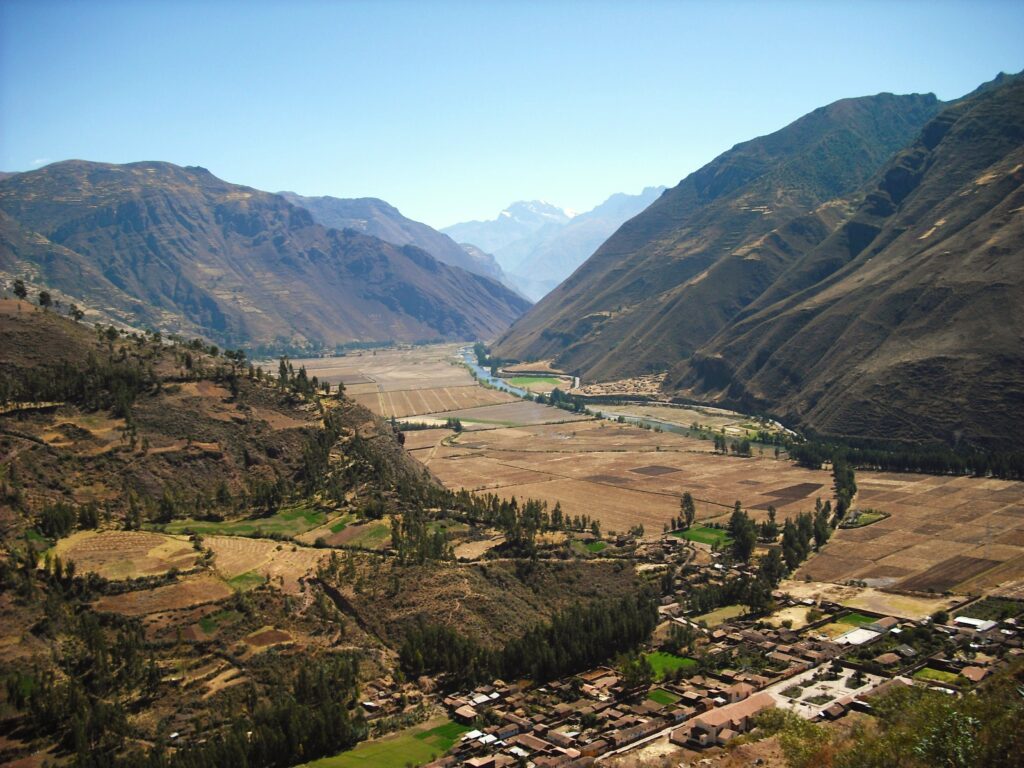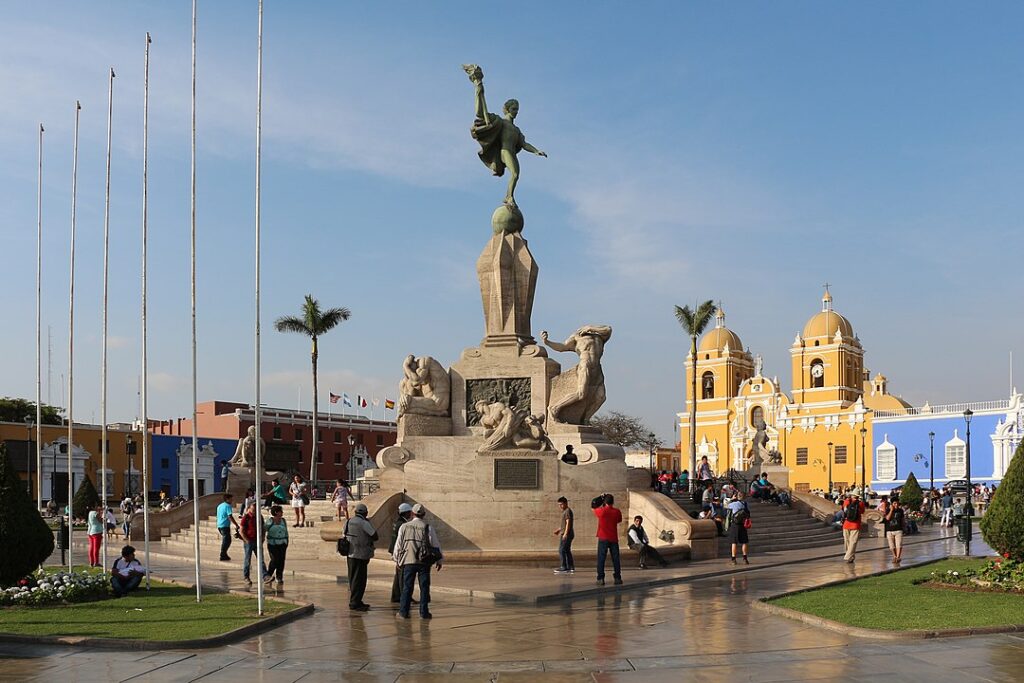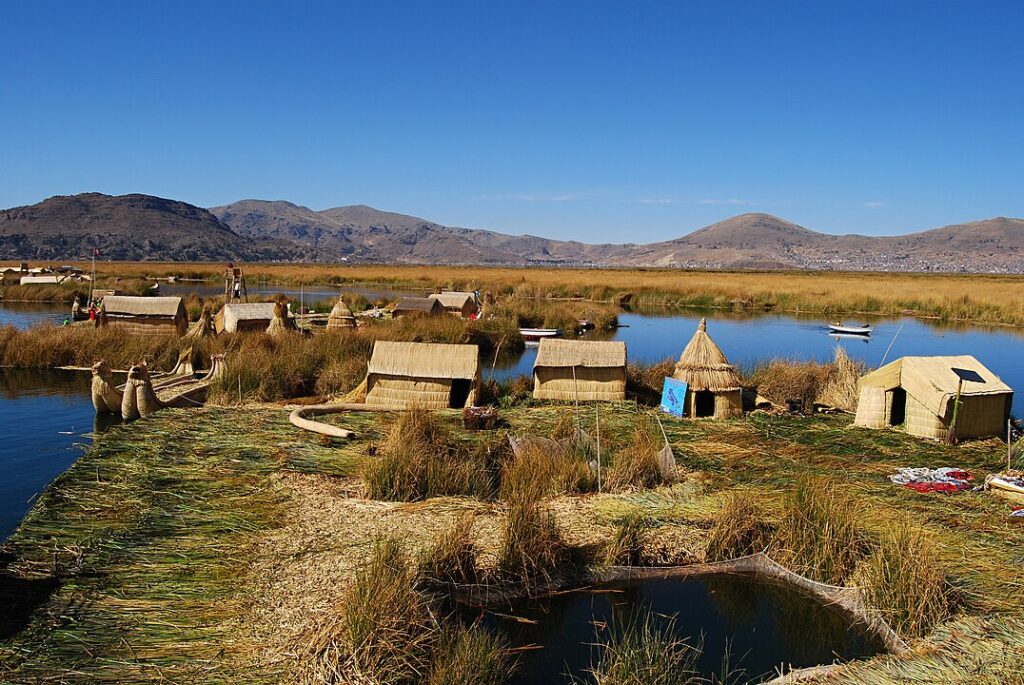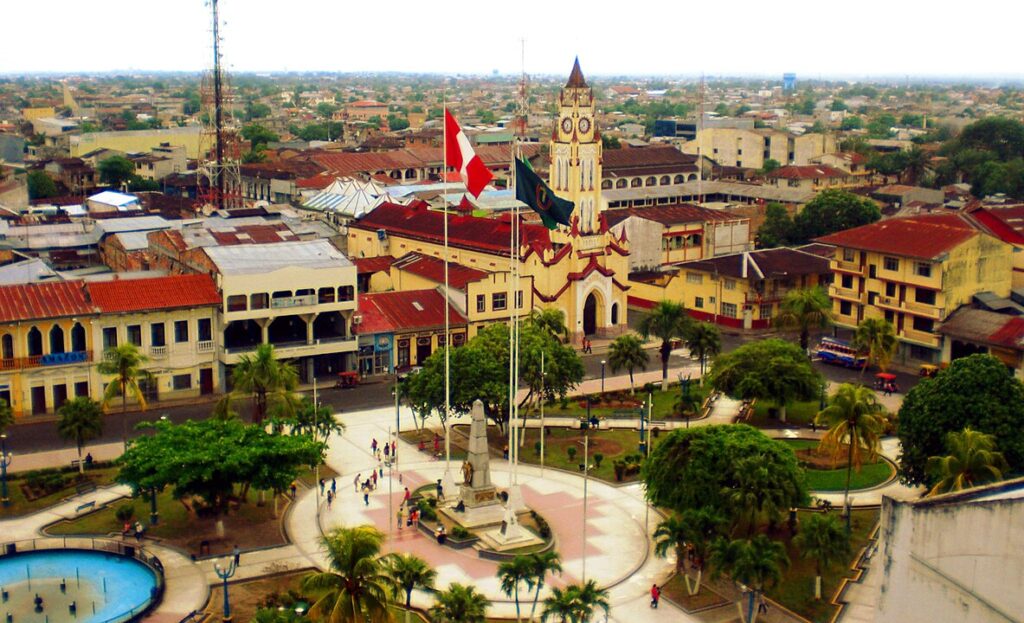Jump to Section
Peru entices travelers with its rich tapestry of vibrant cities, each offering a doorway to diverse cultures and experiences. From the enigmatic Sacred Valley, steeped in Incan legend, to the bustling streets of Lima teeming with life in every neighborhood. This journey sweeps through Cusco’s cobblestoned pathways lined with history; Arequipa’s eateries buzzing from morning till night; Trujillo’s silent ancient ruins; Puno’s depth of tradition on Lake Titicaca shores; Iquitos’ untamed urban sprawl within verdant jungle grips; Chicama and Mancora where waves kiss sun-drenched sands. Each destination beckons as an essential chapter for any travel enthusiast seeking exploration and wonder – a true homage to Peru’s multifaceted allure. The upcoming account digs into select locales that captured hearts during a brief expedition across this majestic land.
City Guides Overview
Here’s a concise breakdown of the key highlights of various cities in Peru:
| City | Attractions | Cuisine | Cultural Highlights | Must-Do Activities |
|---|---|---|---|---|
| Cusco | Plaza de Armas, Sacsayhuamán fortress, San Blas neighborhood | Coca tea, traditional Andean dishes | Blend of Inca and Spanish colonial history | Explore cobblestone streets, visit Sacsayhuamán, shop at artisanal boutiques in San Blas |
| Lima | Miraflores surf spots, Punta Rocas, Renaissance Lima Metropolitan Cathedral | Ceviche, world-class dining at Central | Surf culture, Spanish colonial architecture | Surf at Miraflores, dine at Central, explore Plaza Mayor |
| Sacred Valley | Urubamba Valley, Pisac, Ollantaytambo, Machu Picchu | Local Andean cuisine, coca tea | Inca civilization, Spanish colonial villages | Visit Machu Picchu, explore Pisac market, stay at Hotel Sol Y Luna |
| Arequipa | Misti Volcano, Chachani, Pichu Pichu volcanoes | Rocoto Relleno, Chupe de Camarones, Chaufa con Cuy | Indigenous and Spanish fusion cuisine | Try traditional dishes at picanterías, explore volcanic landscapes |
| Trujillo | Huacas del Sol y de la Luna, Chan Chan ruins, Huanchaco Beach | Northern Peruvian cuisine | Moche and Chimú civilizations | Visit ancient ruins, sandboard at Laguna de Conache, relax at Huanchaco Beach |
| Puno | Lake Titicaca, Uros Islands, Taquile Island, Sillustani Cemetery | Local Andean dishes | Uros and Taquile islander traditions | Explore Uros Islands, visit Sillustani, attend Festival of the Virgin of La Candelaria |
| Iquitos | Amazon River, Belén Market, Monkey Island | Amazonian cuisine | Life in harmony with the Amazon rainforest | Visit Belén Market, explore Monkey Island, take a boat ride on the Amazon River |
| Chicama | Chicama surf break | Coastal Peruvian cuisine | Surf culture | Surf the world’s longest left-breaking wave |
| Mancora | Mancora Beach, Lobitos surf spots | Seafood, beachside dining | Laid-back beach culture | Surf at Mancora, enjoy beachside bars, explore Lobitos |
Mystical Adventures in Sacred Valley

In the heart of Peru’s Andean highlands lies the Sacred Valley, once central to Inca civilization. Stretching across an expanse of fertile farmland and nestled between Spanish colonial villages such as Pisac and Ollantaytambo, this region captivates visitors with its ineffable splendor. For those embarking on Peruvian explorations, a stay in this enchanting valley is non-negotiable.Access to the Sacred Valley from Cusco town takes approximately 1.5 hours by car. Travelers often choose Urubamba or Ollantaytambo for lodging due to their proximity to key attractions including Machu Picchu. One distinguished accommodation option is Hotel Sol Y Luna in Urubamba.
A remarkable Relais and Châteaux property boasting an exceptional setting within these mystical surrounds. When preparing for elevated altitudes like Sacred Valley and Cusco, allocate time for acclimating. Altitude sickness can be mitigated with Altitude RX pills or local coca tea.Ensure vaccination compliance with a negative COVID-19 PCR test and check visa requirements per nationality. Embrace language basics and carry some currency, even though credit cards are widely accepted. Remember most hotels align themselves with clinics making it feasible pre-plan any required health tests.
Navigating Lima’s Diverse Neighborhoods
Lima, Peru’s sprawling capital, isn’t just a stopover but a destination that captivates with its diverse neighborhoods. Each district tells its own tale through food and surf culture alike. Among the bustling streets of Mirafres lies the heart of Lima’s surf scene where enthusiasts from novices to veterans ride waves against an urban backdrop.Surf schools abound here for those eager to learn amidst friendly locals. Venture further southward and you’ll find Punta Rocas, heralded by responsible adventurers as both challenging yet welcoming for aspiring experts. The panoramic vistas can’t be missed or hurriedly skimmed over in photographs alone; they must be fully engaged with body and soul on site.

But it isn’t all about catching waves; the culinary journey within these borders commands attention too. Culinary landmarks like Central shine among world-class dining options highlighting Peruvian ecosystems. An experience drawing globetrotters specifically for taste-driven exploration.Surfing has carved itself into Lima’s DNA much akin to ceviche. This zesty marine staple fuses local catch with bright citrus tones, inviting indulgence from street vendors to fine-dining masterpieces. For intending visitors craving flavor-full exploits, there are practical considerations: summer months offer better conditions out at sea whilst respecting community colloquies ensures one enjoys rather than disrupts their time floating atop South Pacific crests.
The city invites discovery beyond beach life into historically rich corners echoing centuries past while remaining firmly rooted in the present day. Hidden treasures are revealed around every corner, with simple yet profound truths and universal beauty celebrated through perpetual voyages and quests fulfilled.
Discovering Cusco’s Historic Charm
Cusco, once the capital of the Incan Empire, captivates travelers with its blend of indigenous and colonial history. At its core lies Plaza de Armas, a vibrant square encircled by historical edifices such as Cusco’s Cathedral and Church of the Society of Jesus. Both beacons for their Spanish architecture.Beyond this central nucleus stretches San Blas neighborhood: visitors delight in traversing winding alleys lined with artisanal boutiques. Nearby rises Sacsayhuamán fortress. A testament to Inca craftsmanship offering panoramic vistas above Cusco.

Though reaching it involves an uphill trek from Plaza de Armas approximately 25 minutes long, exhaustion dissipates under sweeping views enveloped by fortitude in stone. Temperatures throughout often hover mildly between 41°F and 64°F; however sudden showers may beset one’s sojourn requiring preparation against both sunburn at high altitudes during dry months (May through September) yet accommodating frequent rains come November-to-March period. Recommendations align towards packing versatile layers alongside sunscreen amid dryer spells whereas waterproof gear proves indispensable amidst rainy seasons along with climate-adaptive clothing choices that resist moisture while repelling pesky mosquitoes.Absorbing local culture is best when extra time is reserved after Machu Picchu excursions. This allows for deeper dives into heritage, leisurely coca tea, and market strolls, creating lasting memories.
Embracing Arequipa’s Culinary Delights
Nestled in the shadows of Misti, Chachani and Pichu Pichu volcanoes, Arequipa’s cuisine is a volcanic fusion of indigenous ingredients with Spanish influence. Visitors must indulge in dishes like Rocoto Relleno – spicy peppers stuffed with minced meat or cheese and topped off with baked egg. This staple reflects local farming practices, harnessing produce from fertile lands irrigated by Andean meltwaters.
Equally renowned are Arequipan stews such as Chupe de Camarones; this prawn chowder encapsulates Peru’s coastal bounties and highland herbs into one hearty bowl. For an authentic taste journey through regional fare, tourists partake at picanterías where traditional recipes command respect amidst convivial dining settings. Experiencing Chaufa con Cuy adds another layer to culinary exploration. Guinea pig merged thoughtfully within rice stir-fry brings forth robust flavors beloved across Peruvian culture.Arequipa’s artisanal cheeses offer a subtle counterpoint; they pair beautifully alongside sweet peruanitos figs for dessert or savored alone to appreciate their delicate craftsmanship derived from generations-old cheesemaking techniques rooted deep within these parts.
Uncovering Trujillo’s Ancient Wonders
In the heart of Peru’s northern coast lies Trujillo, a city where ancient marvels tell tales centuries old. The Huacas del Sol y de la Luna stand as testament to the Moche people’s architectural ingenuity and spiritual depth. With its monumental adobe bricks, the Huaca del Sol remains unrivaled in size across pre-Columbian America.Yet it’s within Huaca de la Luna that visitors find themselves enveloped by history; vibrant murals beckon with stories from an Andean past. Not far away are lesser-explored gems like the enigmatic palace known as Huaca Esmeralda. Nearby, the vividly adorned walls of Hueca Arco Iris reflect Chimú artistry at its peak.

Laguna de Conache offers serene boat rides against sunsets or exhilarating sandboarding down dunes, just a half-hour journey from Trujillo’s historical core. An excursion between Chiclayo and Trujillo promises captivating views along Peruvian coasts and diverse landscapes, enriching the journey before exploring cultural sites like Chan Chan ruins or relaxing at Huanachaco Beach.
Journey Through Puno’s Cultural Heritage
Travelers seeking an authentic cultural experience should venture through Puno, set at a breathtaking elevation of 3,830 meters above sea level. Here, amid the cool and temperate climate averaging around 8°C (47°F), one can explore myriad places rich with heritage. The Andean Explorer Train from Cusco offers a scenic journey to this destination over ten hours across stunning Andean plains.Upon arrival, visitors are greeted by Lake Titicaca’s sparkling expanse. Home to Uros Island and its community who celebrate ancient traditions through dance and music in vibrant attire. Nearby Taquile Island is home to around 2,200 residents.

These islanders specialize in intricate handwoven textiles. A craft where men knit while women spin wool using natural dyes extracted from their environment. And captivate buyers with these goods every day at lively local markets wrapped up in jovial festivities.Amantani rises from Lake Titicaca’s waters and invites explorers into adobe homes nestled among lush greenery adorned by Peru’s national flower, the Kantuta. It offers treks to sacred Inca peaks sheltering temple ruins reminiscent of ancient legends. Intriguing archaeological wonders await those visiting Sillustani Cemetery near Puno or marveling at Lampa’s church not far off.
The Don Carlos Dreyer Museum presents both artworks by its founder alongside relics excavated locally. An impressive testament for history buffs delving deep into times past within sightlines encompassed only by panoramic lakeside views. Festivals abound here too: notably February’s Festival of the Virgin of La Candelaria and November city celebrations which honor age-old customs inherent within this region flourishing against all odds high amidst Peruvian sierras.
The Magic of Iquitos Jungle City
Iquitos, the largest city inaccessible by road, stands as a testament to humanity’s capacity for adaptation. Nestled within Peru’s lush Amazon basin, Iquitos offers an otherworldly experience where one can witness how life thrives in harmony with nature. To reach this vibrant metropolis of verdure and vitality usually involves air travel from Lima to Coronel FAP Francisco Secada Vignetta Airport, a journey of nearly two hours.Alternatively, one can travel by boat along the Ucayali or Marañón rivers. The freshwater veins feeding into Iquitos carry forth not just commerce but also contribute deeply to the ecological stability through natural cycles that form humus; nourishing ecosystems sustainably. The rains gather these riches delivering them downstream.

Bestowing upon us waters tinged with tannin. Their blonde hue marking a tale of ancient rhythms. Once arrived at this juncture blending urbanity with wilderness, visitors may encounter jars ranging from 50 to 190 dollars based on their chosen mode and class of transit.For those opting river routes starting at Yurimaguas after mini-van travels post-flight from Tarapoto. An odyssey commences either swiftly aboard fast boats departing pre-dawn or over leisurely days joining meals-inclusive slow vessels casting off come evening twilight. Iquitos experiences rainier seasons from December through March and drier intervals from April to October.
Warmer periods hover near thirty-two degrees Celsius, with less sweltering spells around twenty degrees, and precipitation averages twenty-six centimeters during rainy months and nineteen centimeters during drier times. Those adventuring here find themselves amidst markets like Belén, floating uniquely while peddling sundries alongside jaguar skins, crocodile craniums, and turtle cuts. In addition, Monkey Island, mere kilometers away, becomes a sanctuary focused on convalescing variegated simian breeds, all contributing to the profound respect for the intertwined living cycles that enchant every soul passing through ‘Caserío de Iquito.’
Surf and Sand in Chicama & Mancora
Nestled along the sun-drenched coast of Northern Peru, Chicama boasts a reputation as the world’s longest surfable left-breaking wave. Aspiring to conquer this epic ride compels dedicated surfers to embark on grueling day-long drives through unyielding desert landscapes reminiscent of otherworldly realms from blockbuster films. Yet, those seeking swifter access opt for flights into Trujillo followed by brief taxi jaunts.In June’s mild chill, Mancora reveals itself. An inviting hamlet where beach culture thrives amidst restaurants and bars echoing with local camaraderie. Here lies an accessible point break that tantalizes with its proximity; you can nearly brush against it from shore.
Despite unfavorable swells compromising our expectations at times, we snagged moments amid glassy waves imbued with twilight hues. A prelude to Lobitos. Transitioning there demands navigating rugged terrain owned by petroleum giants, which adds an air of adventure.Stark contrasts abound in Lobitos’ split bay, bearing industrial signatures yet hosting a global surfing commune fixated on capturing unparalleled rides offered by nature’s unfettered design. Lodging meters away from these spots delivers convenience but confirms that even when faced with human alterations or imperfect conditions. It’s indeed all about embracing each unique wave encounter available in such remote surfer sanctuaries.
Exploring Peru offers a rich tapestry of ancient history, breathtaking landscapes, and vibrant cultures. Venture into the heart of Lima for culinary delights or wander through Cusco’s historic streets to sense the pulse of the Inca empire. Whether trekking Machu Picchu’s storied paths or embracing Arequipa’s colonial charm, travel enthusiasts find endless discoveries within Peru’s cities.
Each destination provides unique encounters with tradition, nature, and architecture. An unforgettable journey through one of South America’s most fascinating countries awaits those eager to immerse themselves in its wonders.
Discover a wealth of valuable travel articles by visiting our blog page, brimming with an abundance of tips, guides and inspiration for your upcoming adventures. Whether you’re in search of insider knowledge on unexplored destinations or seeking pocket-friendly advice to facilitate budget travel – we cater to every kind! Our wanderlust-inducing storytellers ensure that each journey is enthralling; curated collections take the reader on a voyage through hidden gems and invite them into their next unforgettable destination where they will be carried away by exploration.





Leave a Reply